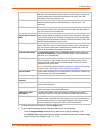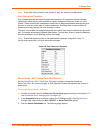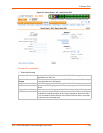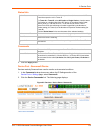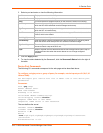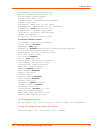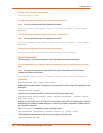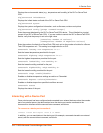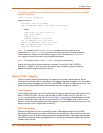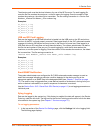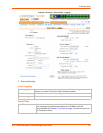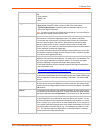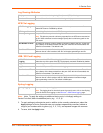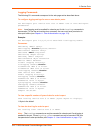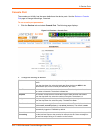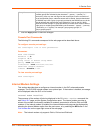
8: Device Ports
SLC™ 8000 Advanced Console Manager User Guide 119
To connect to a device port to monitor and/or interact with it, or to establish an outbound
network connection:
connect direct <endpoint>
endpoint is one of:
deviceport <Port # or Name>
ssh <IP Address> [port <TCP Port>][<SSH flags>]
where:
<SSH flags> is one or more of:
user <Login Name>
version <1|2>
command <Command to Execute>
tcp <IP Address> port <TCP Port>
telnet <IP Address> [port <TCP Port>]
udp <IP Address> port <UDP Port>
hostlist <Host List>
Note: To escape from the connect direct command when the endpoint of the
command is deviceport, tcp, or udp and return to the command line interface, type the
escape sequence assigned to the currently logged in user. If the endpoint is telnet or
SSH, logging out returns the user to the command line prompt.
Note: To escape from the connect listen command, press any key.
Setting up a user with an escape sequence is optional. For any NIS, LDAP, RADIUS,
Kerberos, or TACACS+ user, or any local user who does not have an escape sequence
defined, the default escape sequence is Esc+A.
Device Ports - Logging
The SLC products support port buffering of the data on the system's device ports as well as
notification of receiving data on a device port. Port logging is disabled by default. You can enable
more than one type of logging (local, NFS file, email/SNMP, SD card, or USB port) at a time. The
buffer containing device port data is cleared when any type of logging is enabled.
Local Logging
If local logging is enabled, each device port stores 256 Kbytes (approximately 400 screens) of I/O
data in a true FIFO buffer. You may view this data (in ASCII format) at the CLI with the show
locallog command or on the Devices > Device Ports - Logging page. Buffered data is normally
stored in RAM and is lost in the event of a power failure if it is not logged using an NFS mount
solution. If the buffer data overflows the buffer capacity, only the oldest data is lost, and only in the
amount of overrun (not in large blocks of memory).
NFS File Logging
Data can be logged to a file on a remote NFS server. Data logged locally to the SLC 8000
advanced console manager is limited to 256 Kbytes and may be lost in the event of a power loss.
Data logged to a file on an NFS server does not have these limitations. The system administrator
can define the directory for saving logged data on a port-by-port basis and configure file size and
number of files per port.



